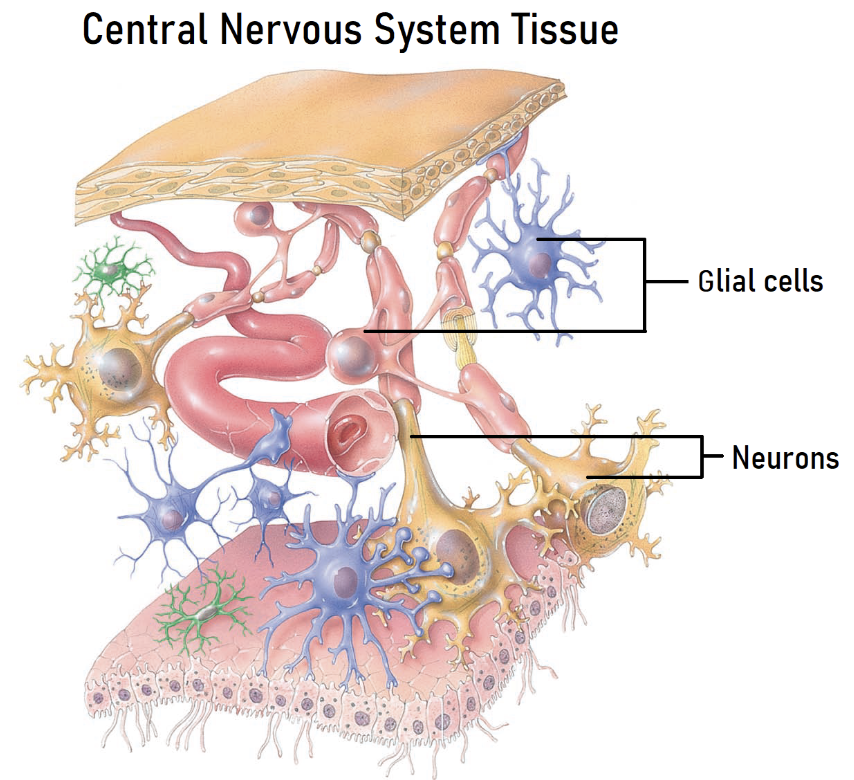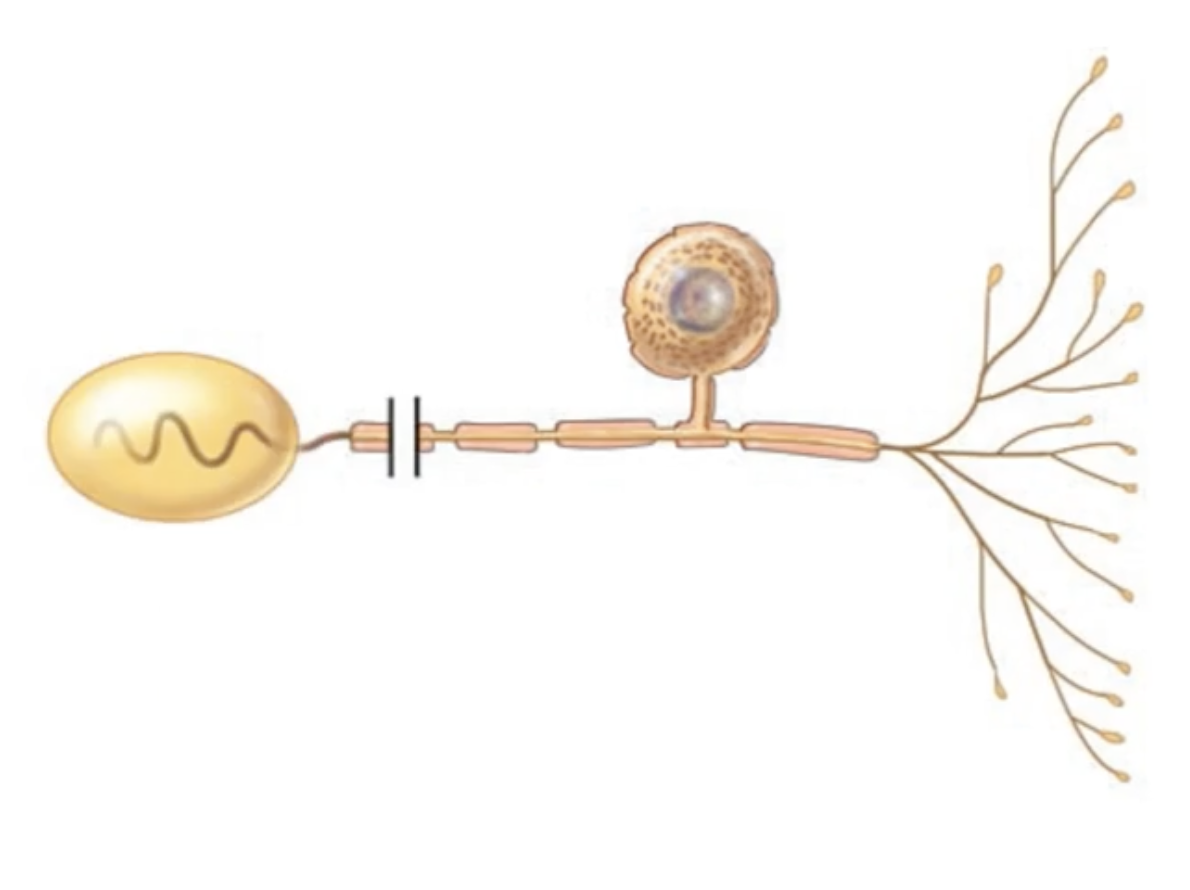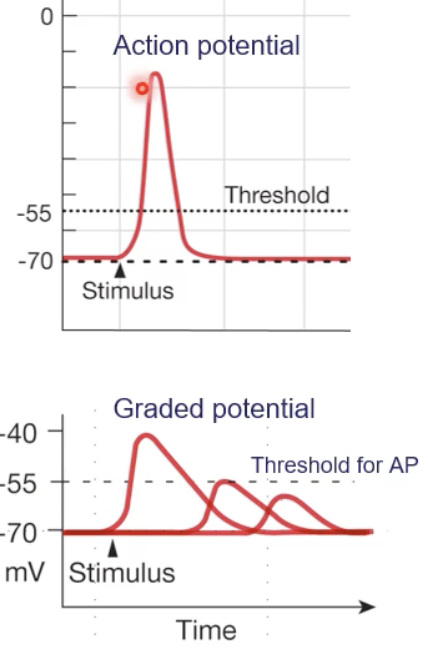Human anatomy and physiology Module 2`
1/20
There's no tags or description
Looks like no tags are added yet.
Name | Mastery | Learn | Test | Matching | Spaced |
|---|
No study sessions yet.
21 Terms
What is the purpose of the nervous system?
-The nervous system works to allow our body to carry out many processes, for example, low-order ones such smelling or touching and high-order ones such as solving complex equations. This contains 3 basic functions such as sensation, integration and motor
What are neurons?
-The functional cells of the nervous system that send messages this is through the action potentials, which allow the body to transmit information to and from the central nervous system, allowing us to feel and move

What are glial cells?
Supporting cells for the neurons which help nourish and protect the neurons and holding them in place, they also support neuron function by helping them transmit action potentials more efficiently and effectively
What are the basic parts in the neuron and their functions?
Cell body: Where the nucleus and other organelles are located
Dendrites: Receive signals from other neurons or sensory receptors
Axon: part of the neuron that carries the nerve impulse towards another structure
What are the 3 different structural classifications of neurons?
Multipolar neurons: More than 2 processes extending from soma
Bipolar neurons: 2 processes extending from soma
Pseudounipolar neurons: 1 process extending from soma however, there is 2
What are the functional classifications of neurons?
Sensory neurons: impulses travel from the periphery to the central nervous system and usually then up to a certain part of the brain. Most of them are pseudounipolar. These neurons are found in CNS and PNS
Motor neurons: Impulses travel from the central nervous system towards the periphery of the body, which are all multipolar neurons. These neurons are found in both CNS
Interneurons: Only found in the central nervous system. They often process incoming information from sensory neurons and then release a response by stimulating a motor neuron. Interneurons are multipolar neurons.
What is a myelin sheath?
Wrapping of fat that encircles the axon to provide it electrical insulation, which helps speed up the transmission rate of action potentials along the axon.
What are sensory receptors?
The initial things that trigger a neural impulse in the sensory neuron, once the impulse is triggered, it will travel up from the axon from the neurons that are stimulated
What is an encapsulated nerve ending? (type of sensory receptor)
-The dendrite end is enclosed

What are free nerve endings? (type of sensory neuron)
-They are the bare dendrites of a sensory neuron and are not covered in any ways

What are specialized receptor cells? (type of sensory neuron0
Detection of stimuli occurs by the cell that is not part of the neuron and does the detection, and then stimulates the dendrites of the sensory neurons
What is resting membrane potential?
-Electrical difference between the inside and outside of a neuron, and is caused by an imbalance of ions across neuronal membrane
-At resting rate more sodium ion outside and more potassium ion inside
-RMP is -70 millivolts

Graded potentials vs action potentials?
-Action potentials are fixed in size once they are initiated, whereas graded potentials have variable in size
-The potentials require for channels to open or close from resting state, which are gated channels

What are gated channels?
-Gates channels control ion permeability across the membrane
- Mechanically gated, chemically gated, voltage gated (the threshold voltage to open or close varies from one channel to another)
Why must graded potentials be graded?
- Because we are able to determine stimulus strength, graded potentials lose strength as they move through the cell and can then become smaller due to, current leak (ions escaping across the membrane) and cytoplasmic resistance, and if strong enough when they reach initial segment in axon hillock, they can initiate an AP
-Graded potentials can be excitatory or inhibitory
What is the speed of the action potential in the axon influenced by?
- Diameter of axon, where larger axons are faster
-Resistance of axon membrane to ion leakage out of the cell, where high resistance axons are faster and saltatory (jumping) conduction between nodes of ranvier(small gaps in myelination)
What is the conduction of action potnetials?
